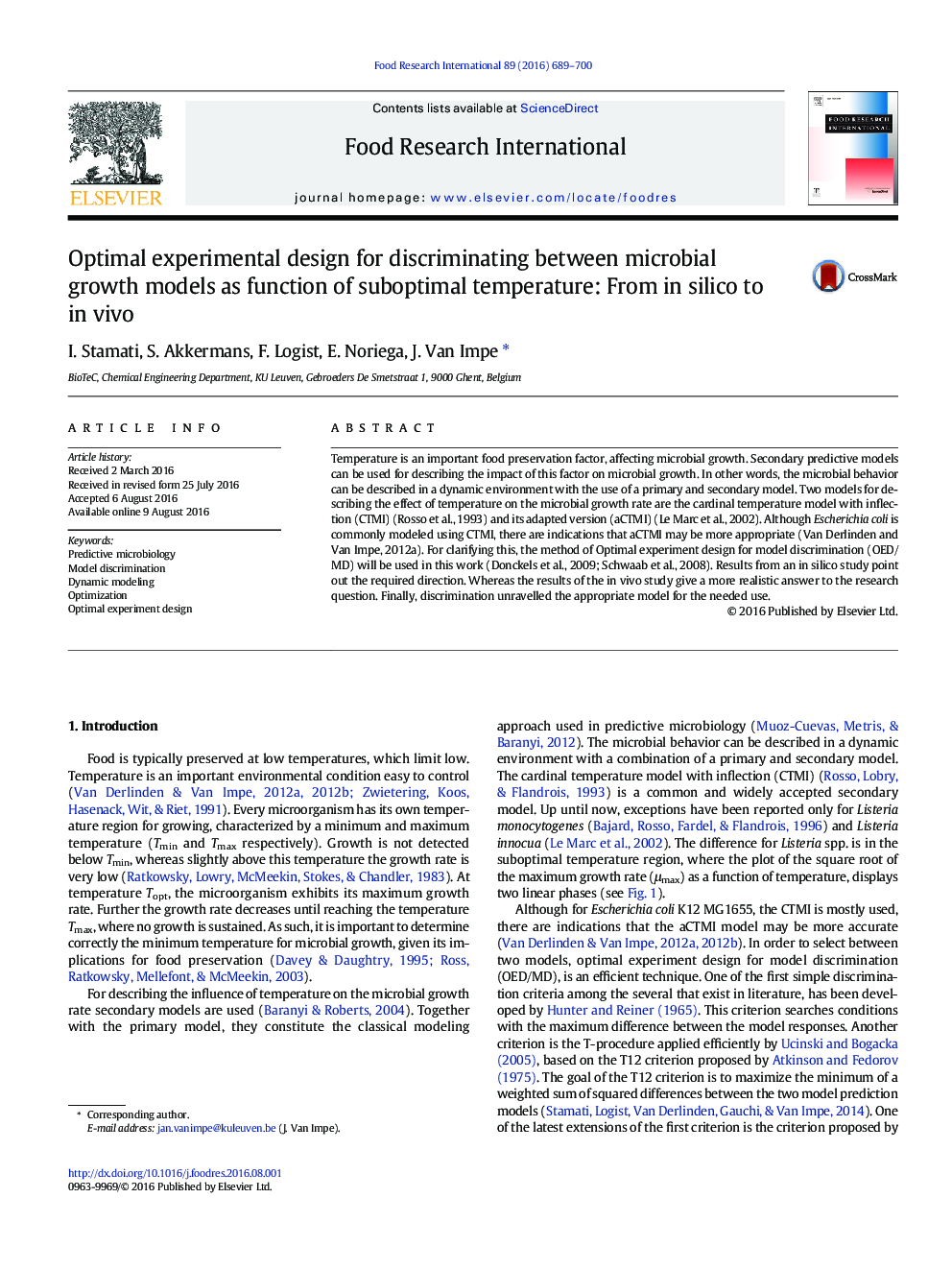| Article ID | Journal | Published Year | Pages | File Type |
|---|---|---|---|---|
| 6394898 | Food Research International | 2016 | 12 Pages |
â¢Optimal experiment design is used to discriminate between microbial kinetics.â¢CTMI and aCTMI models are used for modeling Escherichia coli.â¢Discrimination is investigated as well in silico as in vivo.â¢Optimal dynamic temperature profiles are computed and applied in vivo.
Temperature is an important food preservation factor, affecting microbial growth. Secondary predictive models can be used for describing the impact of this factor on microbial growth. In other words, the microbial behavior can be described in a dynamic environment with the use of a primary and secondary model. Two models for describing the effect of temperature on the microbial growth rate are the cardinal temperature model with inflection (CTMI) (Rosso et al., 1993) and its adapted version (aCTMI) (Le Marc et al., 2002). Although Escherichia coli is commonly modeled using CTMI, there are indications that aCTMI may be more appropriate (Van Derlinden and Van Impe, 2012a). For clarifying this, the method of Optimal experiment design for model discrimination (OED/MD) will be used in this work (Donckels et al., 2009; Schwaab et al., 2008). Results from an in silico study point out the required direction. Whereas the results of the in vivo study give a more realistic answer to the research question. Finally, discrimination unravelled the appropriate model for the needed use.
Graphical abstractDownload high-res image (232KB)Download full-size image
